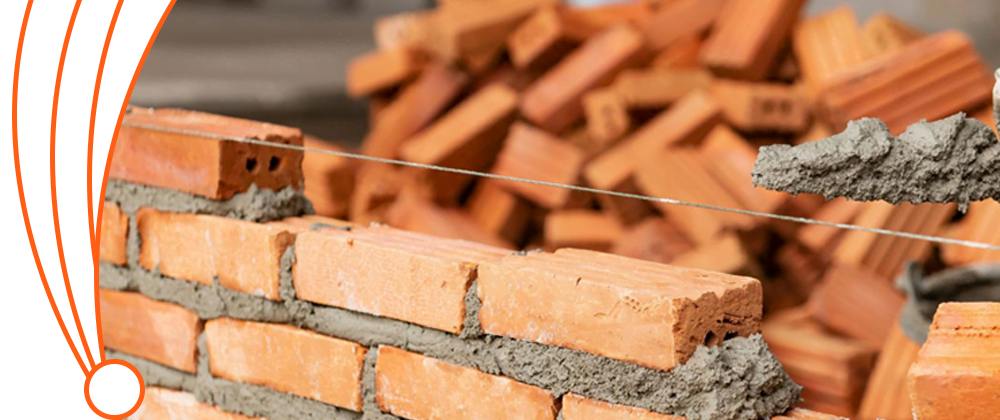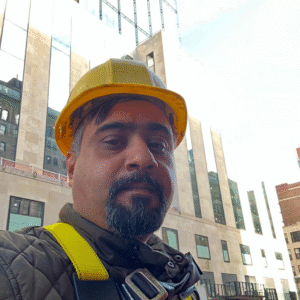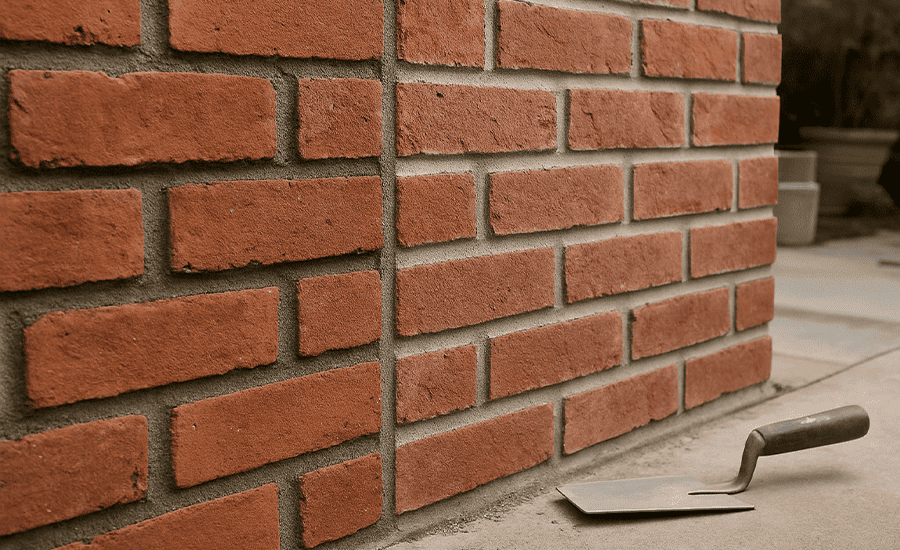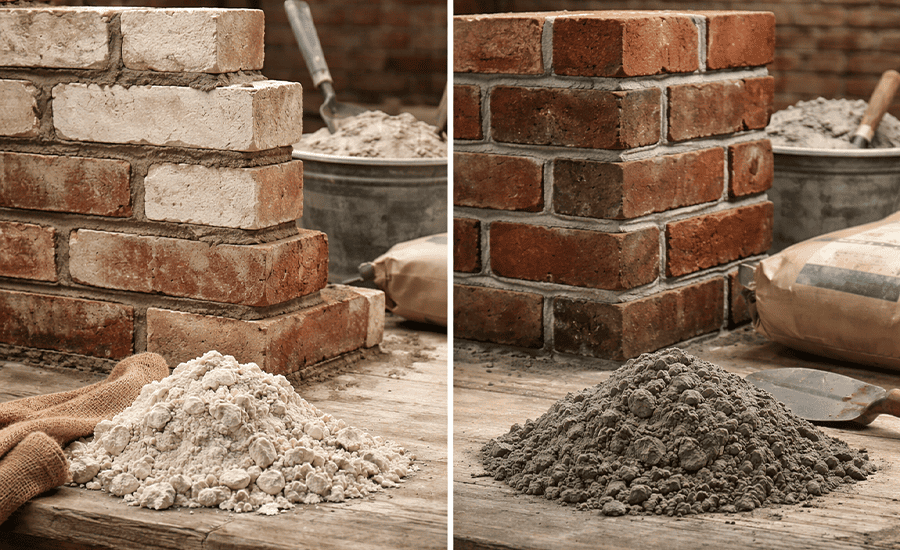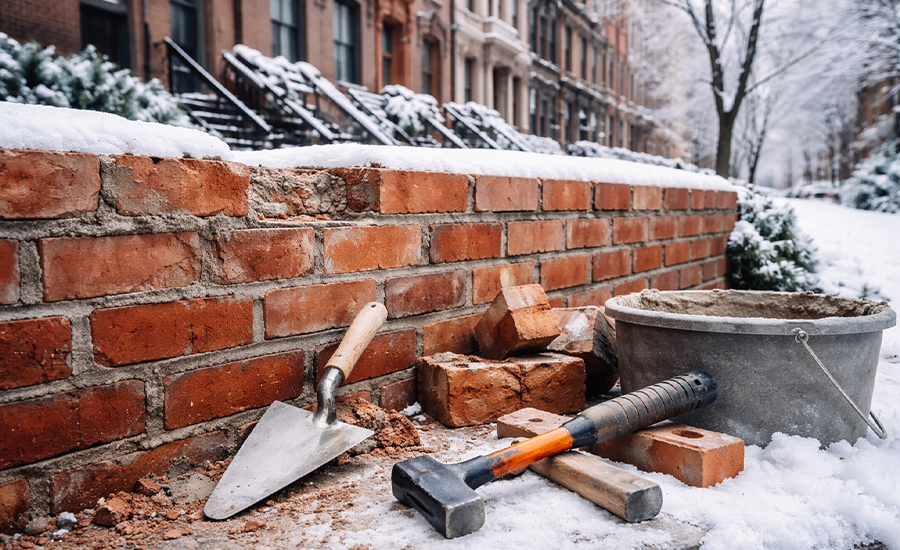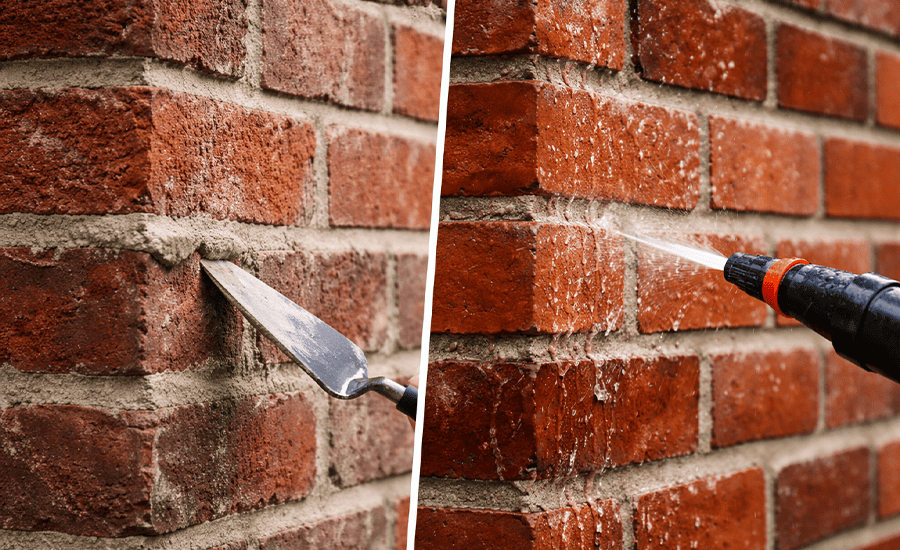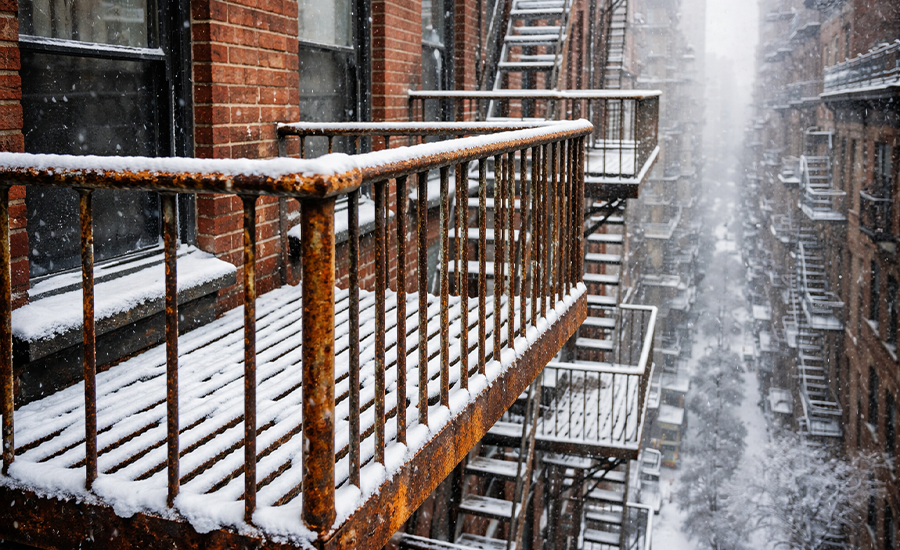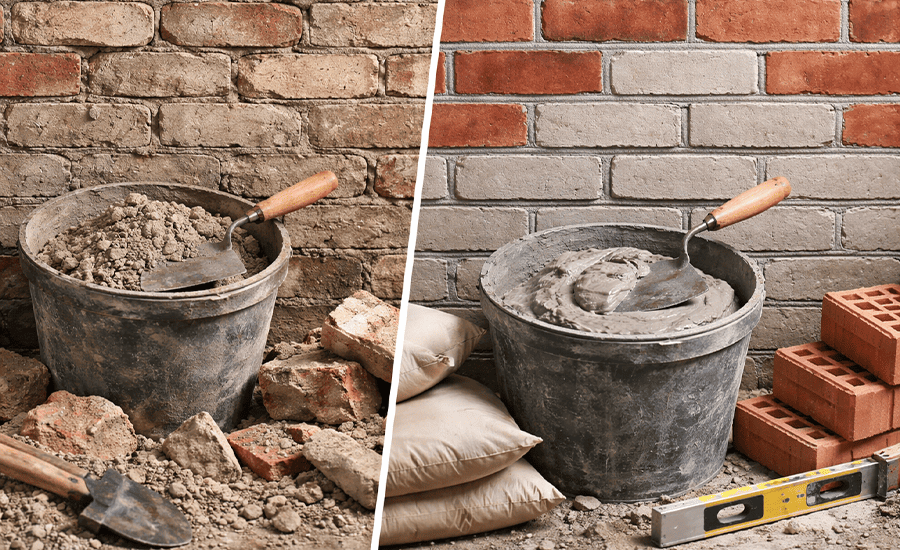Keyed pointing is the time-tested and industry-proven mortar joints repair and restoration technique, which involves the round or V-shaped tools that create a flawless finish and uniform groove that makes your mortar joints look cohesive and smooth. Keyed pointing not only works for looks, but it also strengthens the mortar joints and makes it structurally sound. Due to its functionality and shape, it helps in water shedding and easy water channeling. But it requires efficiency in the whole process and skilled craftsmanship for lasting outcomes.
In this blog, we’ll dive into the most common scenarios where key pointing is most applicable and commonly used.
Areas where Keyed Pointing Must Be Used
Here’s the list of areas and construction sites where keyed pointing is commonly used to maintain the structural integrity and visual appeal.
Modern Housing Masonry
Keyed pointing is often specified in new builds because:
- Aesthetics: It creates a clean, consistent groove that looks professional and highlights the brickwork pattern.
- Durability: The compaction of mortar makes the joint denser, helping resist moisture penetration.
- Uniformity: Perfect for modern homes that require a precise and neat appearance.
Typical examples include:
- Facades of modern townhouses
- Garden walls
- Outdoor kitchen brickwork
Repair of Historic Façade
Historic brickwork often used keyed pointing due to its ability to:
- Blend well with traditional brick styles
- Provide weather protection without altering the original appearance
- Replicate period-specific detailing
Use cases:
- Traditional buildings
- Restored industrial warehouses turned into loft apartments
- Conservation areas where authenticity is required
This approach to preserving authenticity aligns with how struck pointing for older buildings contributes to heritage restorations.
High-Moisture Exposure Areas
Water resistance is a key factor in the popularity of keyed pointing in wetter regions:
- The slightly recessed but compacted groove channels water away from the brick face.
- Prevents long-term moisture ingress, which can cause frost damage or efflorescence.
Examples:
- Coastal towns
- Regions with seasonal heavy rains
- Exterior garden walls exposed to sprinklers
For readers interested in moisture-heavy climates, you can also check how beaded pointing high moisture environments compares in such conditions.
High-integrity structural walls
Keyed pointing isn’t just decorative; it also enhances structural performance:
- The compacted joint bonds more firmly with brick edges.
- Helps maintain wall alignment over time.
Common Applications:
- Load-bearing walls
- Bridge parapets
- Industrial chimneys
Artistic Brickwork with Sharp Profiles
Sometimes, key pointing is chosen purely for its crisp, professional look:
- Accentuates brick patterns like Flemish bond or English bond.
- Gives shadow lines that add depth and character.
Projects include:
- Feature walls in homes and offices.
- Garden retaining walls with decorative brick patterns.
- Accent borders on driveways and patios.
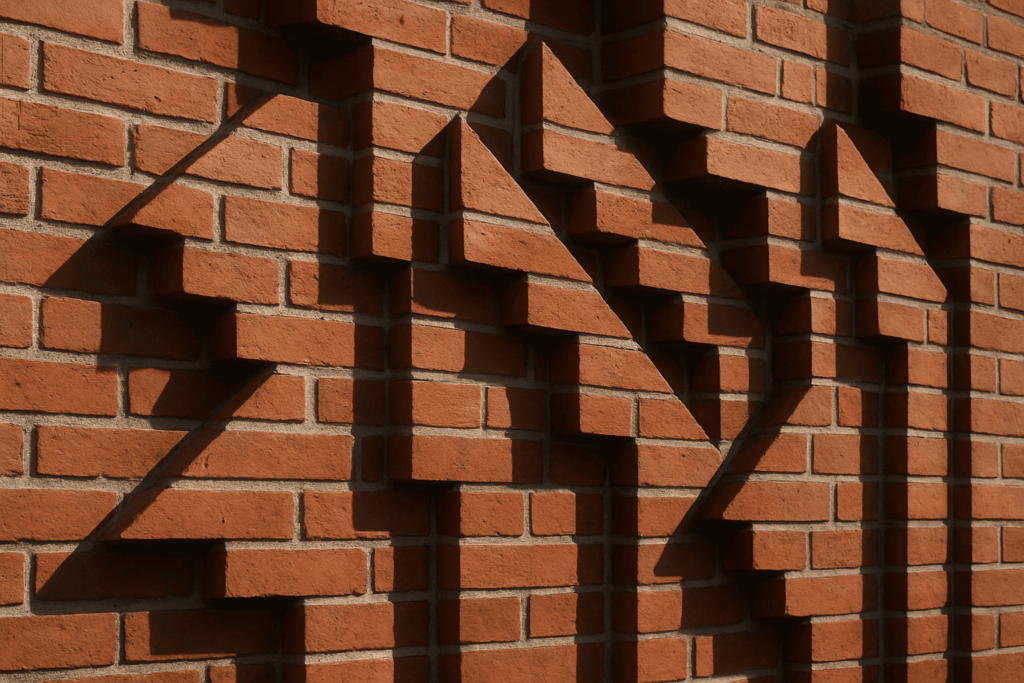
Positive Aspects of Keyed Pointing
Keyed pointing offers multiple benefits that go beyond looks, making it a practical solution for strong and lasting masonry.
- Weather Resistance: Water is guided away from mortar joints.
- Durability: Compacted mortar extends joint life.
- Clean Appearance: Consistent grooves enhance aesthetic value.
- Structural Strength: Improves wall stability.
- Versatility: Works for both old and new constructions.
The ability to shed water effectively is also discussed in detail under struck pointing water drainage, which highlights similar benefits.
Anticipated Downsides of Keyed Pointing
While keyed pointing has many strengths, it’s not always the perfect choice:
- Not Ideal for Harsh Freeze-Thaw Cycles: Deep frost climates may cause cracking if moisture is trapped.
- Less Historic in Some Periods: May not match certain older brickwork styles without modification.
- Requires Skilled Masons: Uneven grooves can spoil the look.
Expert Guidelines For Keyed Pointing
- Match mortar color to brick for a seamless look or contrast for emphasis.
- Ensure joints are fully compacted to prevent hairline gaps.
- Avoid excessive recessing because it can weaken water-shedding ability.
- Use in combination with proper wall flashing and damp proofing.
Sardar Restoration Corp. proudly serves every corner of NYC, including the Bronx, Manhattan, Brooklyn, Westchester, and Queens. Our services are designed to meet your needs, providing top-quality solutions wherever you are. Check our service areas to see how we can assist you in your location.
Contact us today at (+1) 917-355-8556 or sardarrestoration@gmail.com, or visit us at 2770 Fish Ave, Bronx, NY 10469, United States.
FAQs
Can you match my existing keyed pointing style for repairs?
Yes! Sardar Restoration Corp. can professionally match your current keyed pointing’s and mortar color to blend new work seamlessly with the old.
How long does key pointing last?
Keyed pointing can last up to 30+ years, depending on exposure and maintenance, but only if it’s done the right way with excellent materials.
Will you keystone stone walls too?
Yes! Sardar Restoration Corp. offers keyed pointing services on stone walls, but it’s more common on brick. Our keyed pointing contractor in NYC can adapt the technique for specific stone masonry projects.
How soon can you paint over keyed pointing?
Sardar Restoration Corp. lets the mortar cure for at least 28 days before applying paint or sealants.
